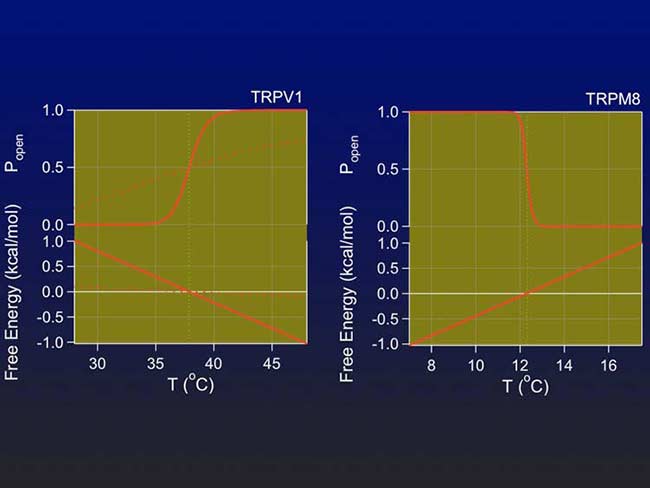| Click on the images below to know more about our research. |
|
Thermodynamic principles
We study the thermodynamic behavior of thermoTRPs through analysis of heating- or cooling-induced current (Yang et al. PNAS, 2010). As anticipated, activation of all thermoTRPs involves a large change in both enthalpy (ΔH) and entropy (ΔS). A simple explanation of the observation is that activation of thermoTRPs causes substantial rearrangements of the channel protein complex. It is noticed that ΔH and ΔS are matching and balanced in each thermoTRP channel. This is important because it ensures the difference between ΔH and TΔS (i.g., ΔG) is small and can be easily overcome within the physiologically relevant temperature range (see Figure 3). Another way to demonstrate this point is that the ratio ΔH/ΔS defines the half-activation temperature of the channel. Unmatched ΔH and ΔS would yield a channel that responds to temperatures in a non-physiological range. It is anticipated that shifts in the fine balance between ΔH and ΔS can explain many physiological observations of adaptation and sensitization to temperature.

Figure 3 legend: Thermodynamic principle of high temperature sensitivity. A large ΔS value makes the ΔG versus T curve steep, so that a small temperature increase (for heat-sensing TRPV1) or decrease (for cold-sensing TRPM8) can substantially reduce ΔG. This causes the channel’s open probability to increase rapidly upon temperature change. The behavior of a “regular” channel with small ΔH and ΔS values is shown with dotted curves as comparison. |